
Like so many courses, Porthcawl was originally a 9 holer which later saw nine holes added. This early configuration was unsatisfactory, hence in 1895 the club left the original Charles Gibson nine holes for the ladies and Ramsey Hunter added nine holes. Despite obtaining Royal status in 1909 the membership wished to see the course improve; enter HS Colt. Colt radically redesigned Porthcawl in 1912-13. Bernard Darwin was quite taken by the changes and cited 3, 5 and 9 for particular attention. Interestingly, there is some question as to Coltís involvement for the third hole. The club believes Colt created eight new holes which essentially define the routing; 4, 5, 6, 8, 9, 14, 15 & 18. Since that time 8 and 14 have been altered. We know Simpson altered the 8th, but it isnít clear who worked on the 14th.
Led by Bernard Darwin as the Chairman, the R&A investigated the possibility of Porthcawl hosting an Open and with this in mind the club called in Simpson to make changes in 1933. While the changes were many and serious, the routing was left in place with a few minor alterations. New tees were created for 1-4 and 9 with some bunkers filled-in. New green sites were used for 1-3, 5-6, 7-8, 10, 16 & 17. The 6th green was altered for a dogleg left approach. The 12th was re-routed using the old 8th green. Amazingly, the work was completed in a few months with the course being ready to host the 1934 British Womenís Open. A 1933 Simpson plan of the course shows a radically different bunker scheme, but a routing which is essentially in place today. I might add that it is thought the 7th is a Simpson original. Below is Simpson's course map.
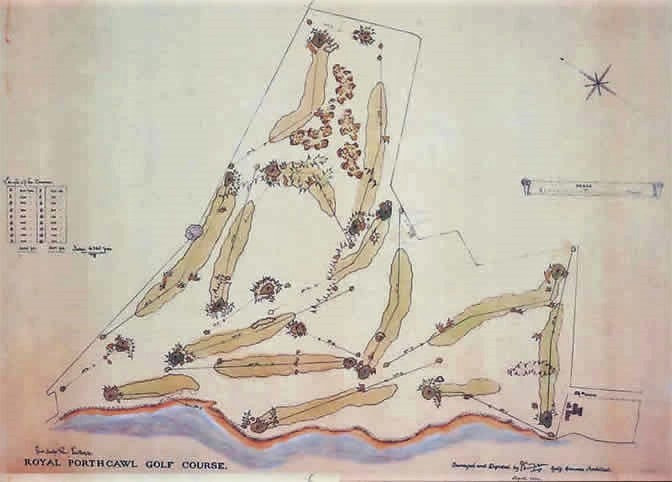
K Cotton altered Simpson's 8th and12th. The 8th now uses a green site quite close to the original Colt green near the wall. In recent years the tee was moved well away from the 7th to create a dogleg left, essentially around the wall. Which meant the 12th green was moved right and was fairly recently extended. The 13th too was altered to leg right. This terrific hole now legs left, but uses Simpsonís green. Simpsonís blind double dogleg 17th was also altered. I believe the fairway is oriented more to the right to take advantage of a fall-off and create a sweeping turn left. However, I am more intrigued by the changes made to the 14th and who was responsible as this is easily Porthcawlís best short hole. I believe some greens were recently altered by M Ebert, but I don't know the details.
Many
will notice the majestic building sitting adjacent to the course. The Rest Convalescent Home was established in 1862 for the working classes, particularly coal miners. Early patients included survivors of the Tynewydd Colliery disaster in which a flood killed several men and trapped others for 10 days. The celebrated social reformer, Florence Nightingale, is thought to have supported and worked at the home. Sadly, the home closed in 2013 and was converted into luxury seaside apartments.
The clubhouse too is rather unusual in a very homey way. The temporary building used to house workers for Queen Victoriaís Diamond Jubilee held in 1897; the first time diamond was used in the context of a 60th anniversary. The building was dismantled and rebuilt at Porthcawl. Much like the Monarchy, the building (with its many extensions!) has admirably stood the test of time and tempestuous storms. The same cannot be said for the proshop. The building was blown to splinters across the car park by a memorable 1990 winter gale!
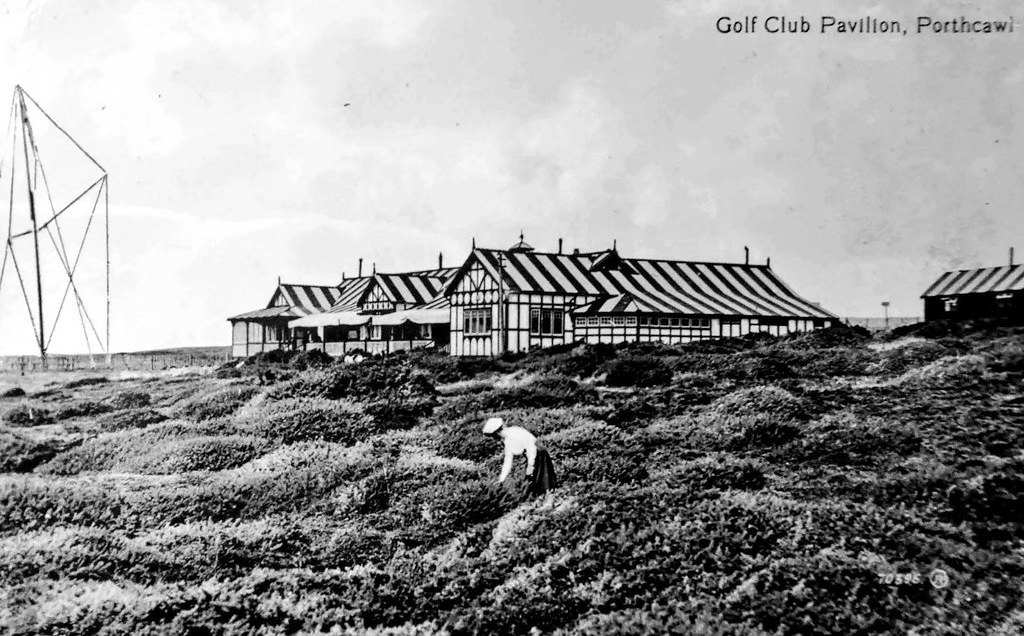
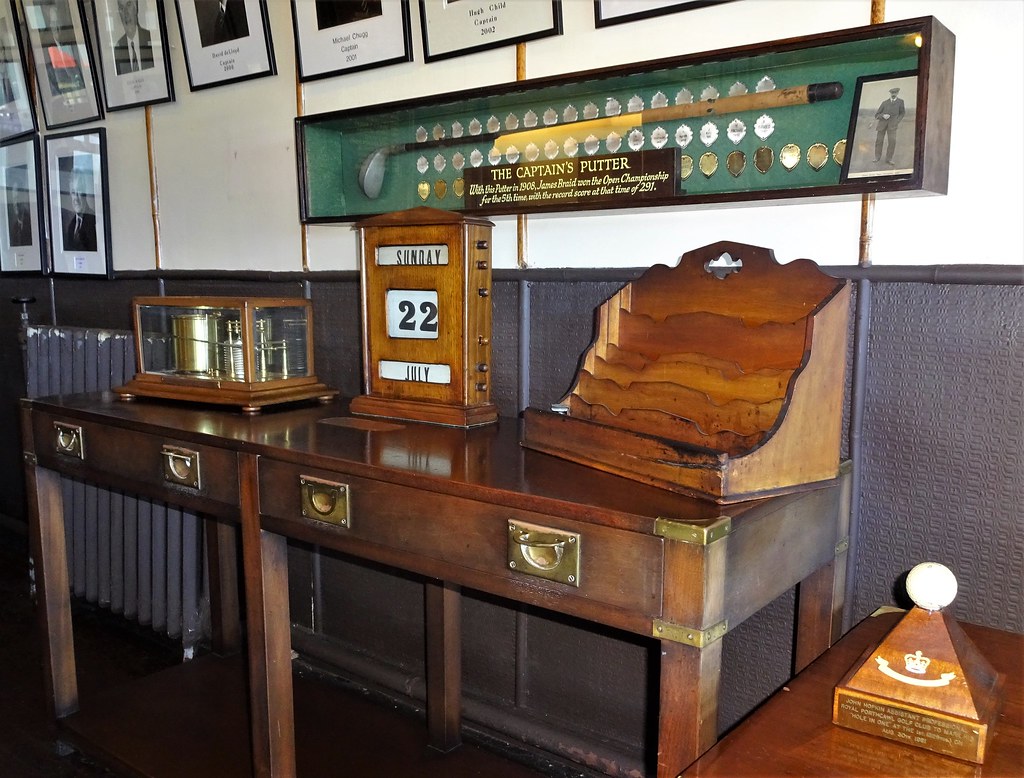

The lockeroom is in the same vein.

A few reminders of the Porthcawl's tournament history. The club hosted, seven Amateurs, a Walker Cup, three Ladies British Opens and a plethora of professional events including two Senior Opens.
Tiger's Walker Cup caddie bib.


The opening three holes head in a north-westerly direction and are in close proximity to the beach. Into a head wind these can all be challenging holes, especially #s 2 & 3. The first hole crosses the 18th to a fairway with a pronounced right to left tilt. The bunkers down the left work very well for the back tee as it sits hard on the beach.

Pam Barton playing from the original tee.

It is a pity erosion and the coastal walk make it difficult to maintain daily tees near the beach because it would be wonderful if one or two of the these opening holes could present a different angle tee shot. However, I am not certain the second needs any additional challenge. At 410 yards into the wind this hole is more testing than most can handle.
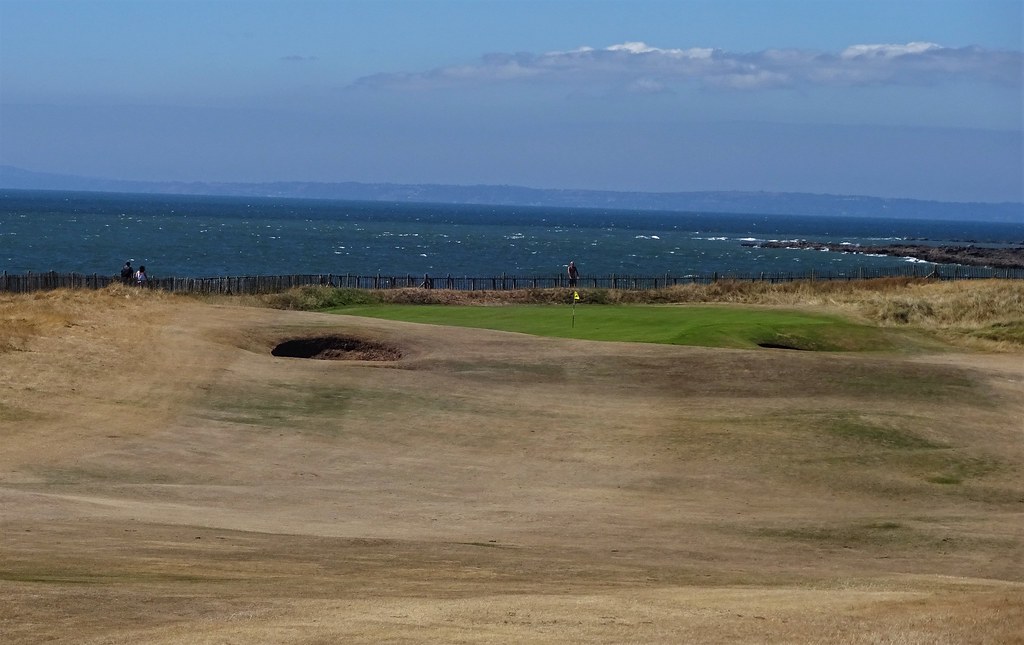
Somewhat similar to the second, #3 plays blindly over a hill. Below is the approach.

The plateau green rises a bit more sharply than it seems from the fairway.
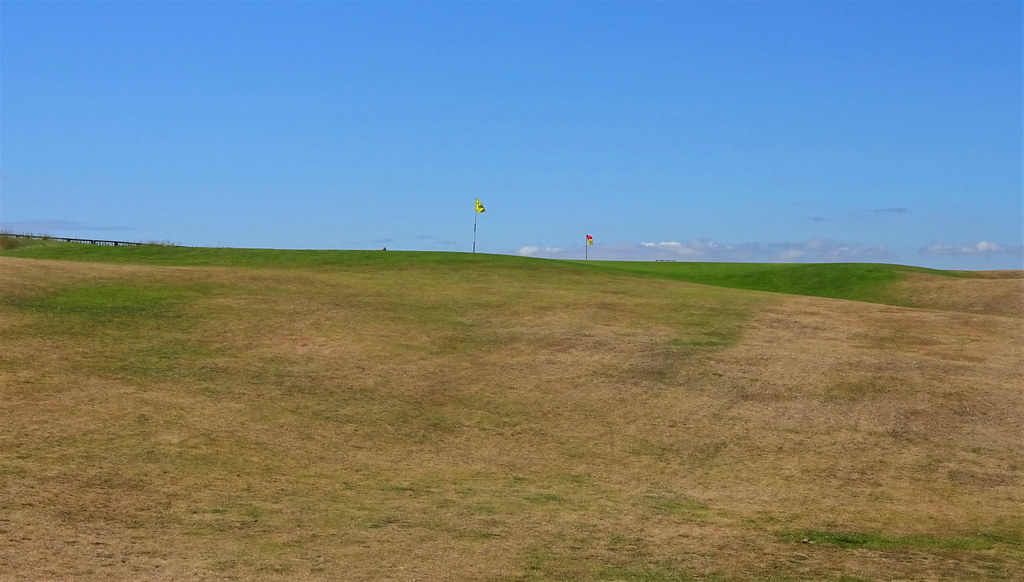
We now turn east for the short 4th; a well conceived hole which allows a run-up shot, but the cover distance must be accurate. In the past few years it seems like the club is experimenting with more natural bunker shapes and surrounding vegetation. This is an obvious example of such.

The first par 5 reminds me a lot of Gullane #1's second hole except I think the concept works better as a reachable par 5 with the penalty for erring left being out of bounds. Playing uphill and often downwind, this hole has the effect of flattening (especially long) approaches and perhaps leaving the golfer with a terribly slippery downhill putt. Both this hole and the 9th were altered by effectively creating tiers to offset the the heavily sloped back to front greens. Interestingly, the wings of this green used to be much more pronounced, but I don't know who flattened them. Perhaps more radically, recent additional fairway bunkers have dramatically narrowed the tee shot. The approach.
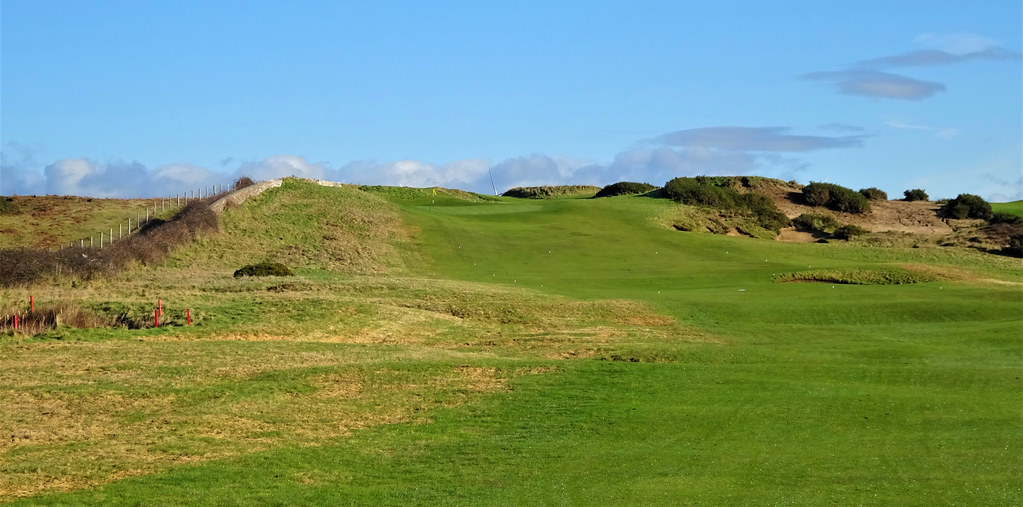
Right of the green.
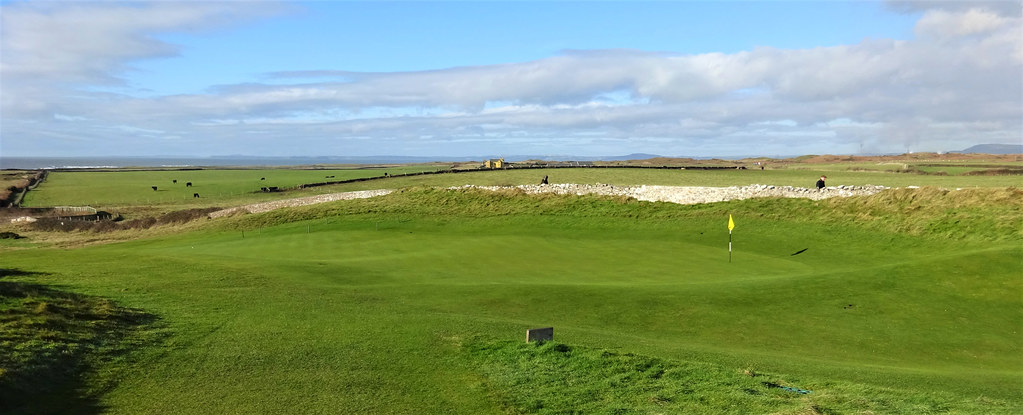
Behind the green.

Porthcawl has fully transitioned to the high, flatter section of the property for #6. Still heading in an easterly direction, but with a more pronounced dogleg left than #5, the golfer must decide to either challenge the pinching bunkers in the drive zone or lay-up and accept a less than ideal angle for the approach. The tee seen in the foreground is for #10.
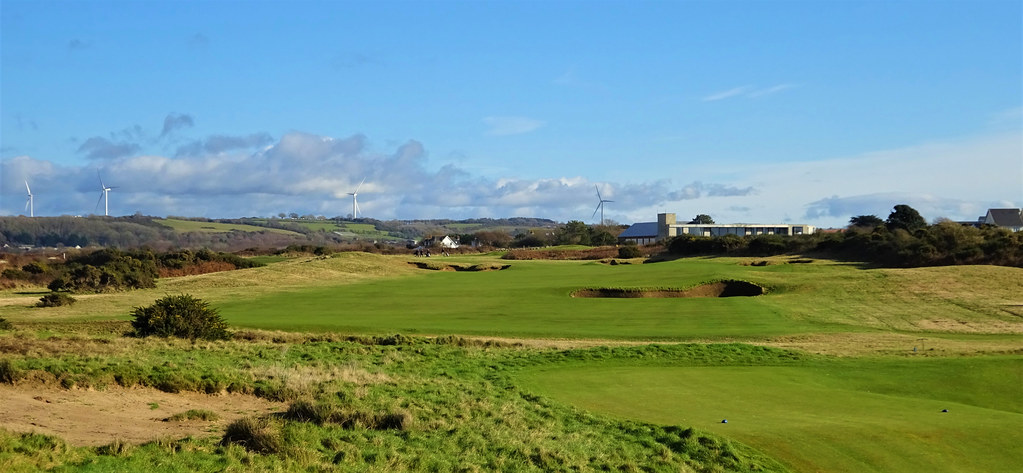
As on the previous six holes, the short 7th continues hugging the boundary line on the left, but turns in a southerly direction. The hole stands in complete contrast to its surrounds with rounded mounds and heavy bunkering. Perhaps the hand of man is too obvious?

Rear of green.

The second par 5 turns more or less west and once again features an uphill approach with a boundary wall on the left, deceptively close to the fairway and green. Even from this area of the course, the sea remains in sight.

One of the standout holes, the sublime ninth once again turns direction. This dogleg left is the first hole without a boundary on the left, but no matter, being left is as good as dead.
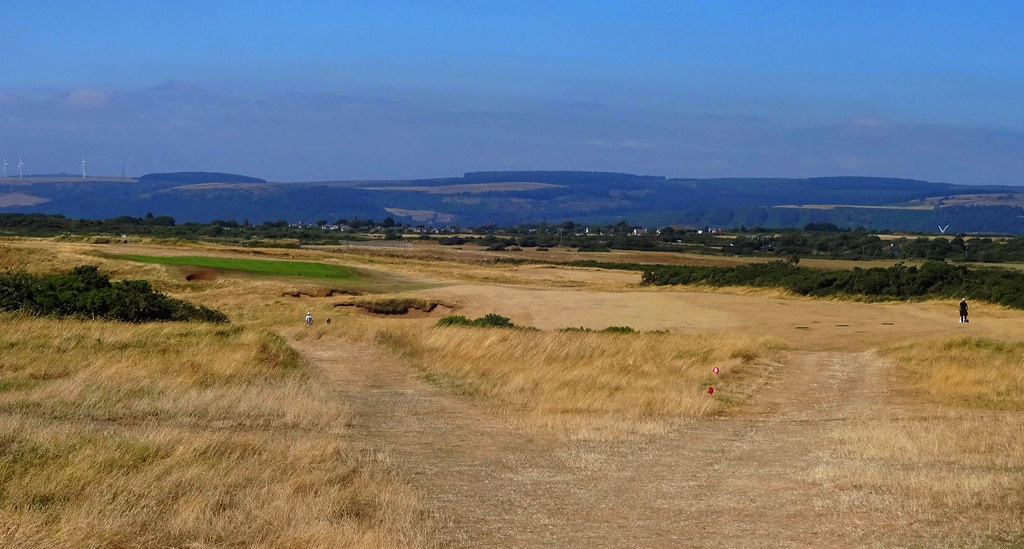
One can see that approaching from this angle with the wind off the left is no easy task. The full impact of the new bunkering can be fully appreciated on this hole. While one can debate if bunkers belong on the face of the ridge, there can be no argument that the new bunker visually works far better than the pot which previously existed.
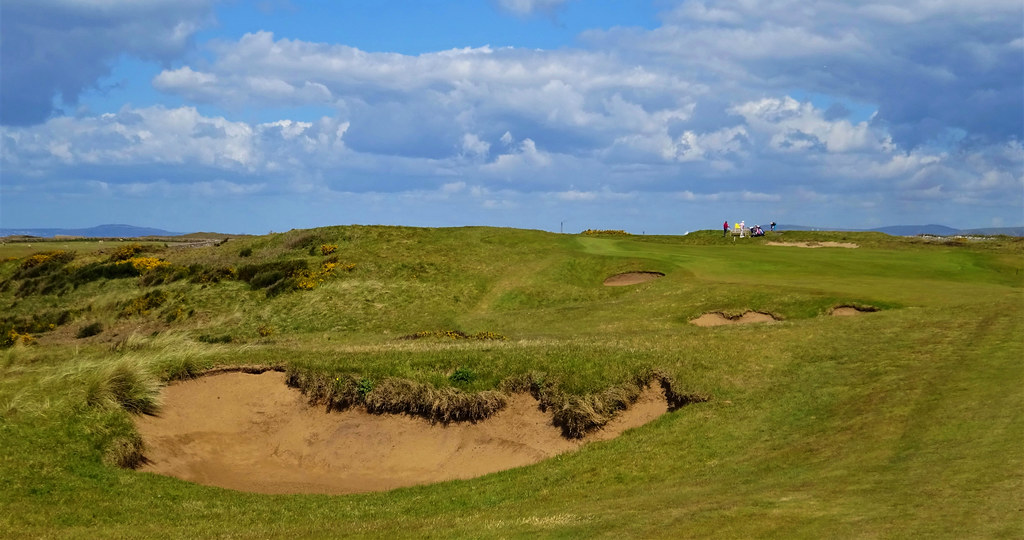
A closer look at the green. In addition to several new bunkers, the club has introduced waste areas. The rear of the green used to be a scrubby area of gorse.

I cannot help but think that the many downhill drives and uphill approaches are a consequence of Colt's changes because the look is so similar to many other Colt courses. In any case, #10 drops from a reasonable elevation then heads slightly back uphill. However, the stand-out feature of the hole is the left to right green with protecting bunkers both left and right. Disappointingly, the newish back portion of the green was recently removed. By the way, yes, the 10th changes direction (west) yet again.
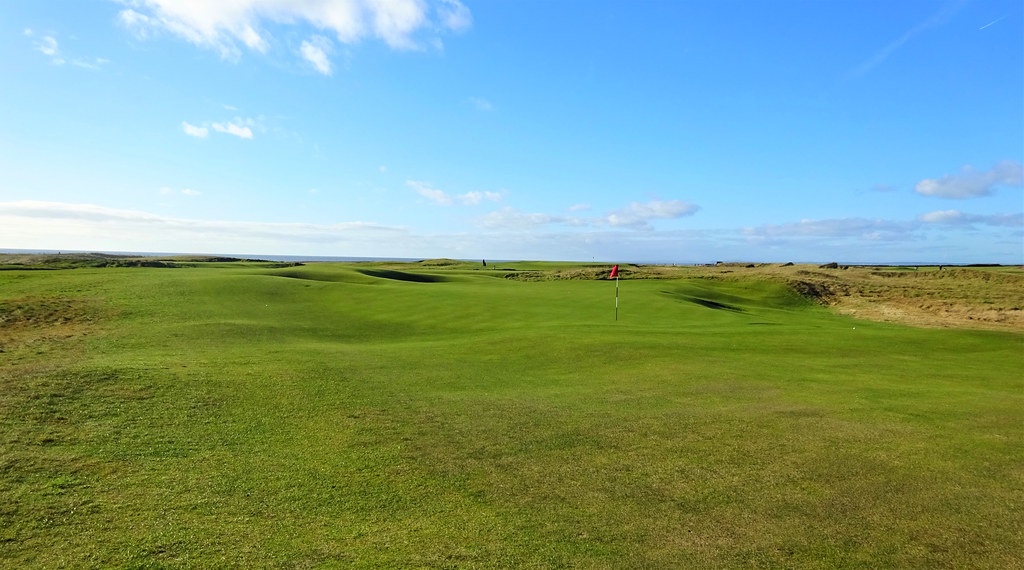
Behind the green.

Another solid short hole, the 11th features a plateau green resting in the lee of a hill which will often play downwind. Don't ask, just look at the above map to see the change of direction!

The blind three-shotter 12th plays uphill for the tee shot. New bunkers visible on the horizon provide some definition. Also, a new waste area was added in front of the tee. If laying up, the second may be thought of as bland, but getting in the correct position for (what should be) the short approach is critical. This new green is slightly raised and angles to the back right.
We now hit a run of holes which is the highlight of Porthcawl as all three are All-Wales candidates. 13 turns back on the 12th and doglegs left toward the beach between a hollow left and a deep recessed bunker right.
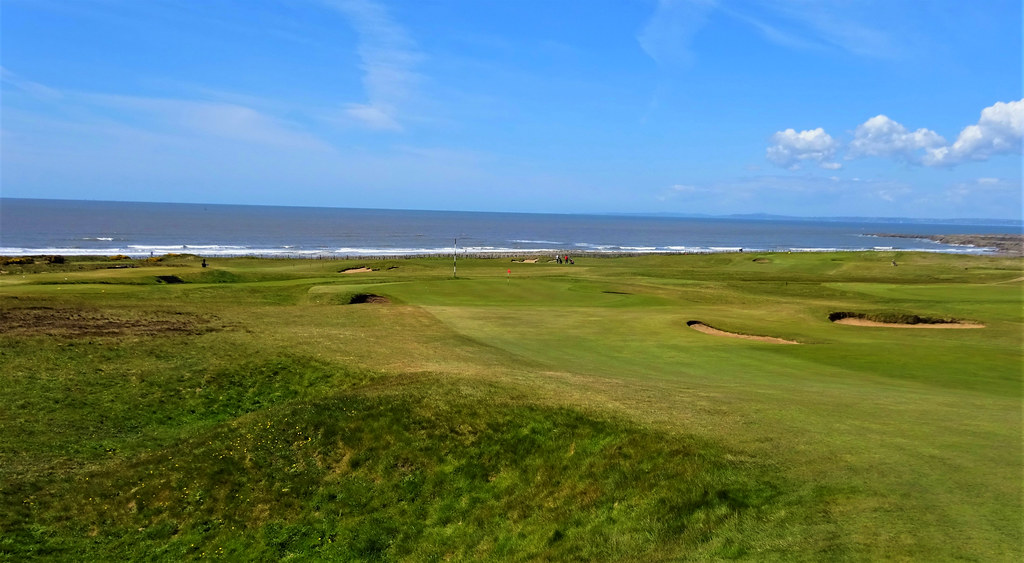
The par 3 14th is an outstanding short hole and may be Porthcawl's best.


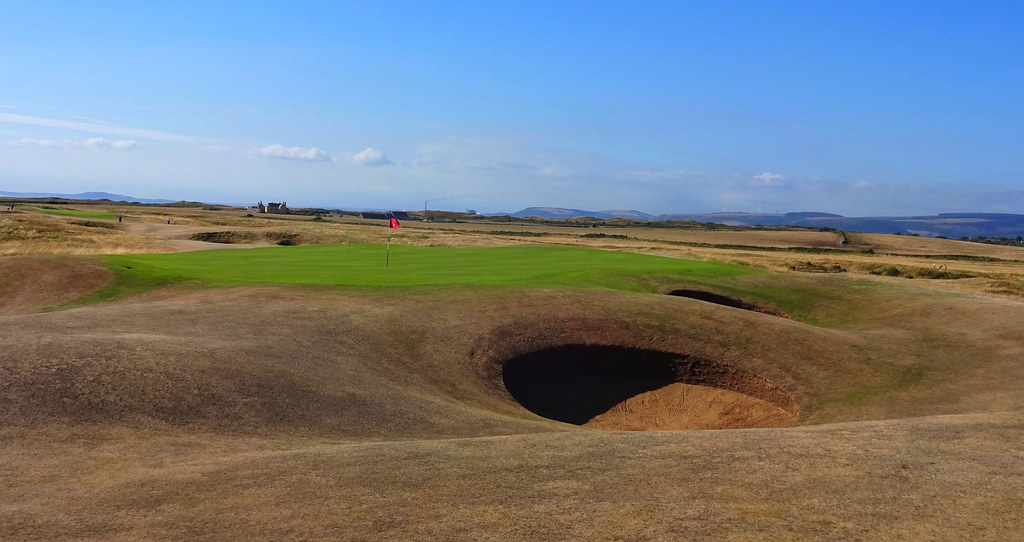
The course unfairly has a reputation for 12 lower holes on classic links and six higher holes on less than ideal land. All of Porthcawl's land is good for golf and that is self-evident. The vicious 15th is one of Porthcawl's strongest holes and highlights how much elevation change there is and how often it occurs throughout the round.
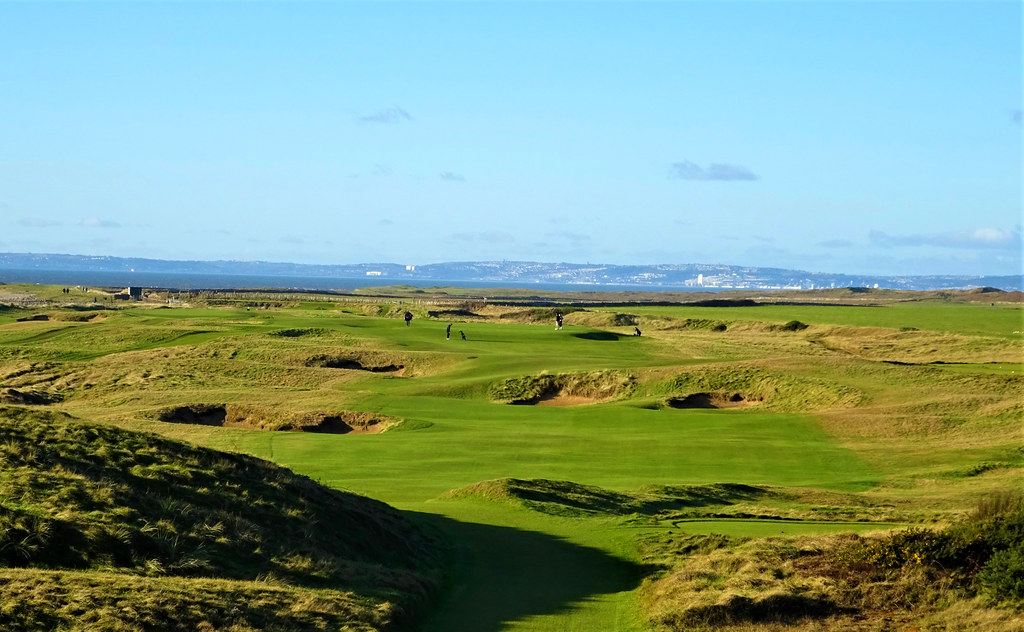
Among the final four holes are three two-shotters whose fairways are broken by severe features that will often force a layup; 15 & 16 leave blind approaches. The 16th heads back up the drop off that was descended on the previous hole. The cross bunkers in the face of the incline (~260 yards out) are very reachable.
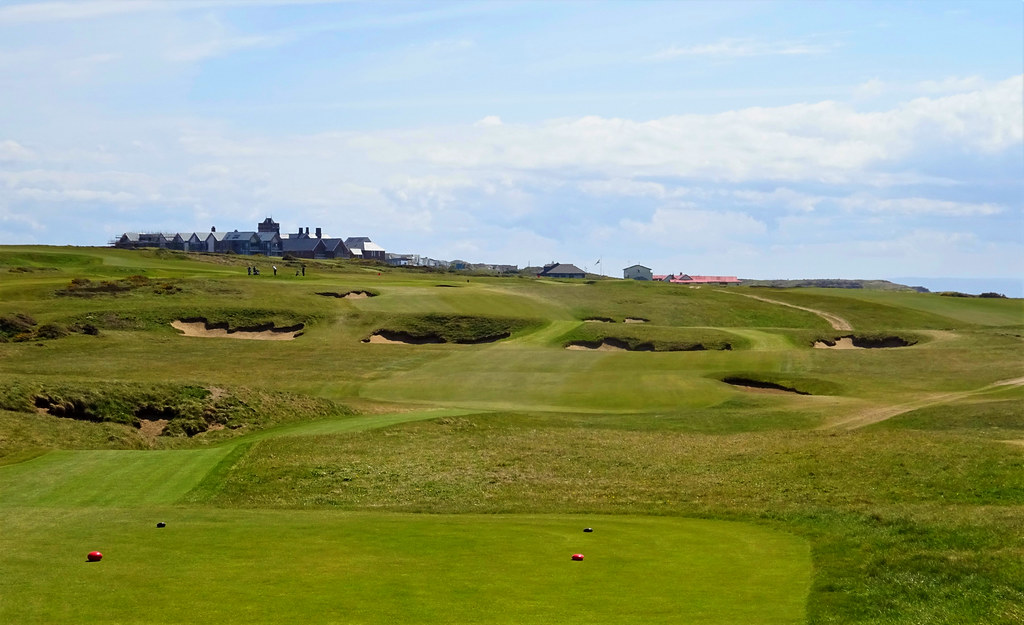
The drive on the penultimate hole is not unlike that of the 12th. It is uphill and blind. It is best to stay right for the optimal approach angle, but a sandy waste lurks in the right wing. The safer tee shot used to be to the left, but similar to 5 & 6, a new bunker was added to narrow the drive zone. While very reachable and somewhat troublesome because of the left to right tilted green, the 17th isn't quite satisfying.
The home hole is somewhat controversial due the downhill fairway being broken up with rough ground. Perhaps this is a reasonable criticism given 15 & 16, however, the stunning backdrop and three tier front to back green more than make up for this perceived design fault.
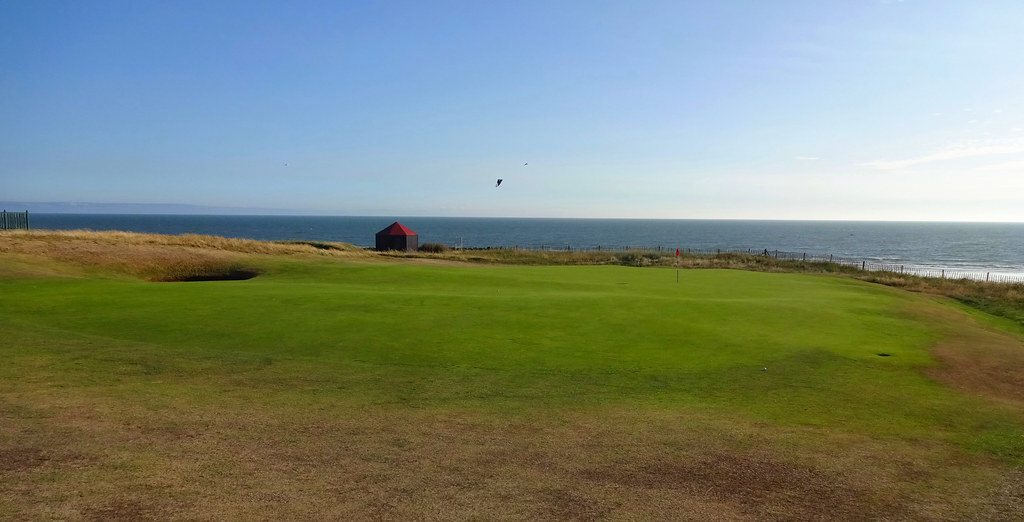
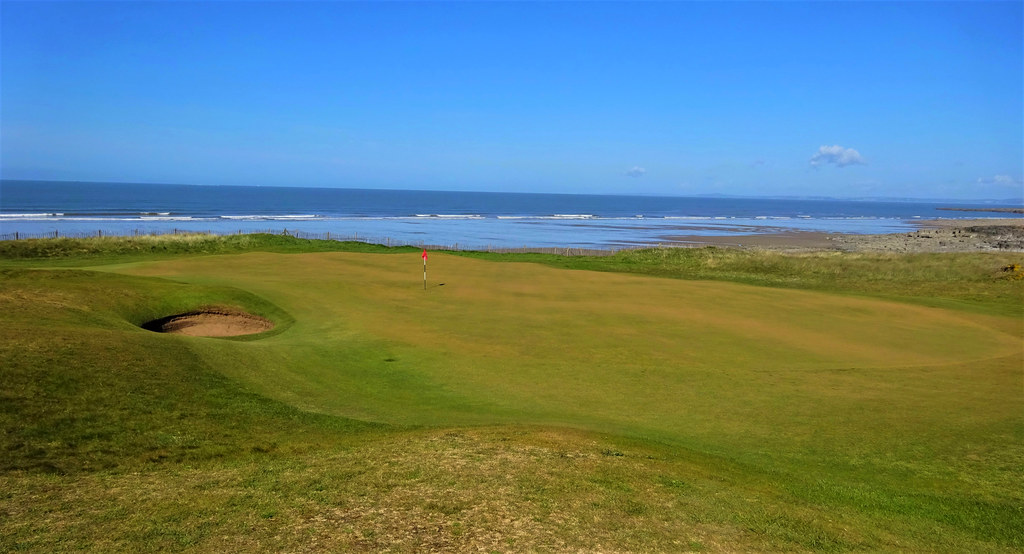
An old aerial of the 18th green.
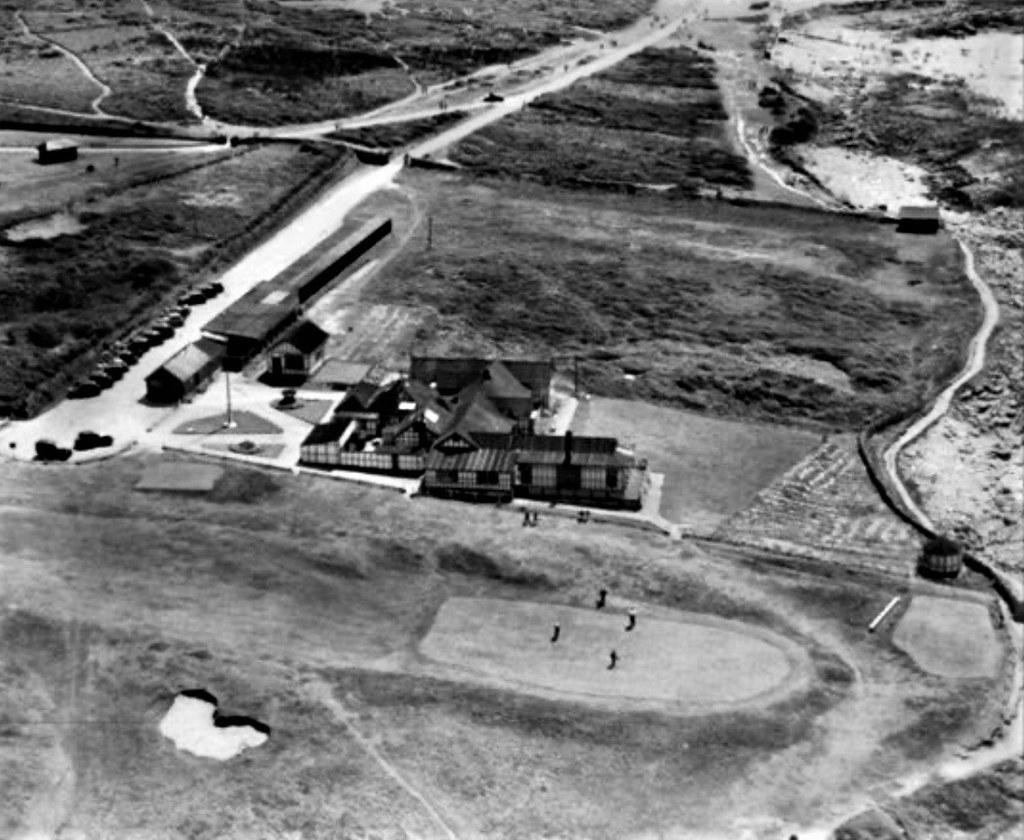
It is always fun to revisit a course after many years and see how one's impressions have changed. This visit certainly made me sit up and take notice of Royal Porthcawl yet again. Despite a general feeling of the course reminding me of bits and pieces of several championship courses such as Portrush, Muirfield, Formby etc (a re-occuring theme for Colt involved courses), Porthcawl does retain a sense of place which is of itself. The case is made more succinct considering Porthcawl has hosted many prestigious events over many decades. However, perhaps more importantly, it is the details provided by a dedicated membership which hits squarely home. 2* 2022
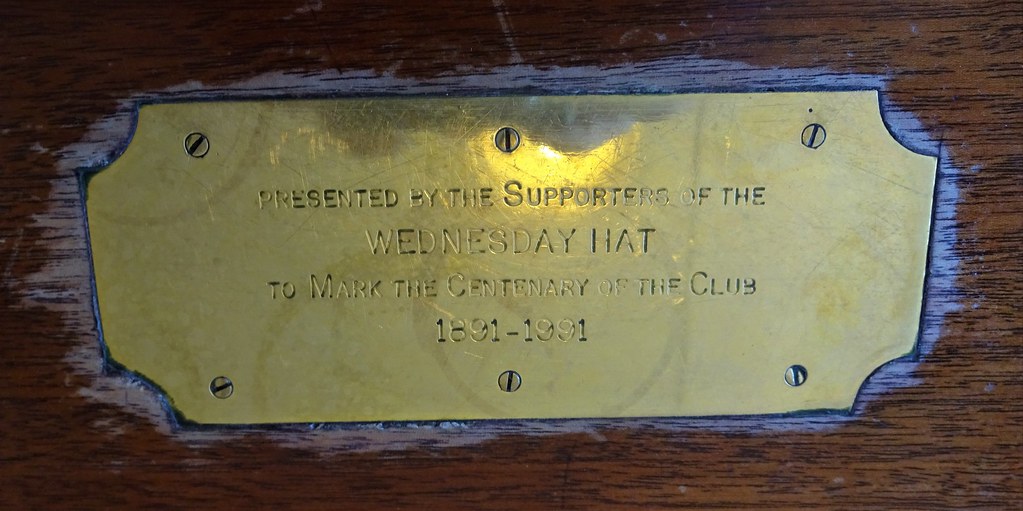
Ciao